Hi, I’m Marshall Vandruff, hosting the Proko Halloween episode. Let me show you how to draw a face on a Halloween pumpkin. First draw a pumpkin, then draw a face on it. That's the simplest way. But it's a little too simple.
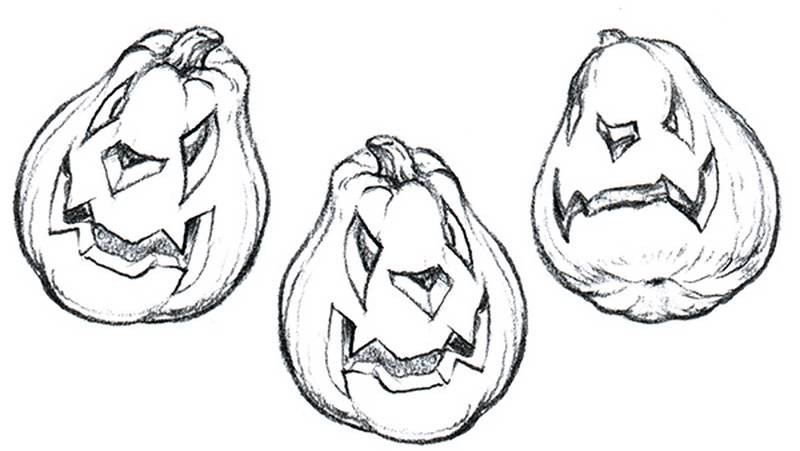
What if we want to “tip it around”? I mean – make it look kinda real and kinda round like you could hold it in your hands… like a pumpkin? Well, we start simple, with a circle, but we need a perspective trick to make it a ball. Is it above us? Or below us? This could vary. We can tip it a little, or look way up at it, or way down on it. The secret is in the equator. It’s an ellipse. The placement of an ellipse around a round object shows you how it’s tipped.
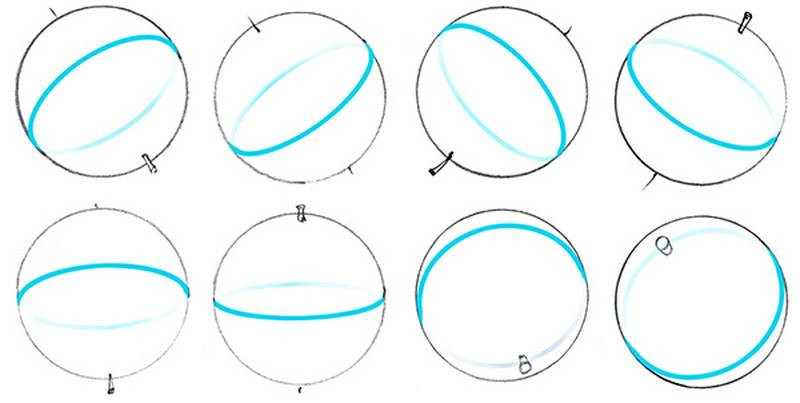
If it’s above you, you curve it this way: convex to the top. If it’s below you, you curve it the other way. Now this is easier seen than done. Spheres are advanced perspective, but I’ll show you some beginning secrets.
The more it tips, the more the equator becomes circular. If you looked down on it, it would be a circle. The less it tips, the straighter it gets. If we look at it level, it’s a straight line. The same thing happens left to right. Those circular divisions near the middle appear straighter than the ones near the edges. And that curve, subtle or serious, always gets serious at the edge. It “crawls around”.
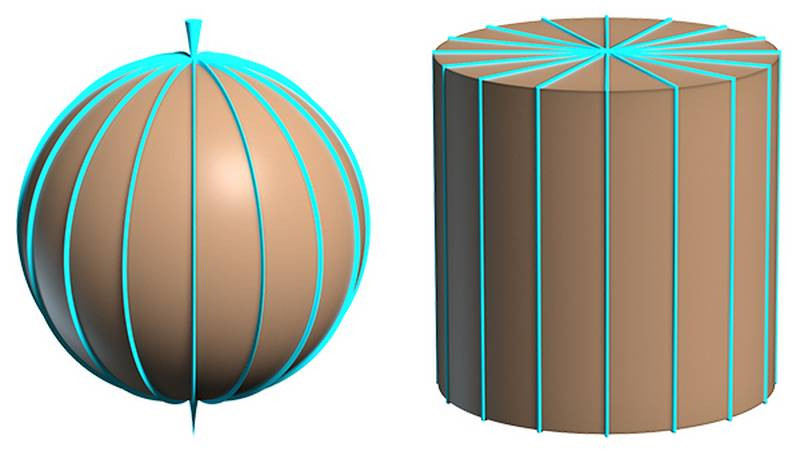
Here’s a big secret: when we have equal divisions around a ball or a cylinder, and we tip them into perspective, those equal divisions don’t look equal anymore. We have more of them crammed at the edges than in the center where they spread out.
That’s about the ball. Now let’s put a face on it. Here are some tips:
In 3/4 views, the eye on the distant side skinnies up more than you would expect. A smile on a sphere goes around to another side. Around… on an ellipse.
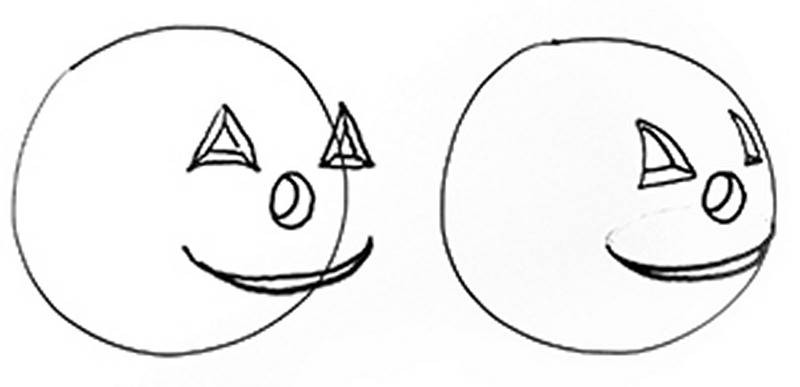
If we’re looking up at it, the curve of that equator can overtake the curve of the smile. The same with a frown when we look down on it.
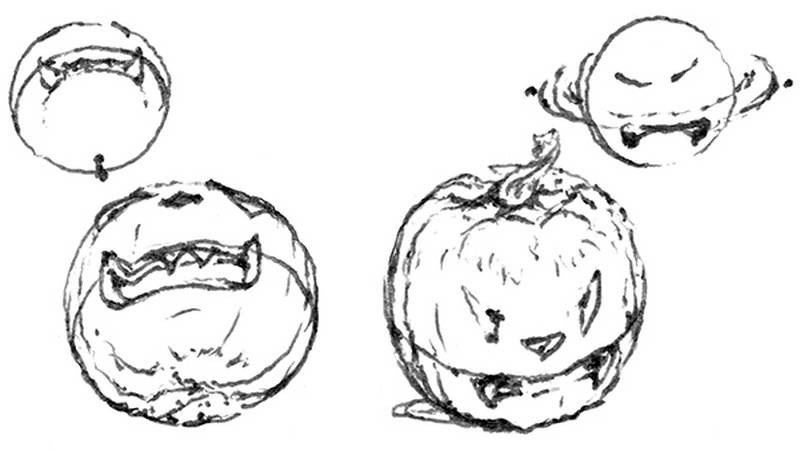
Now, it’s still just a ball. To make it a pumpkin, we need to lump it up. Each one of these areas is sort of roundish, so when we put these little equator lines around them, those are called cross contours, they show us that this lump is going away from us that way, or going away from us the other way.
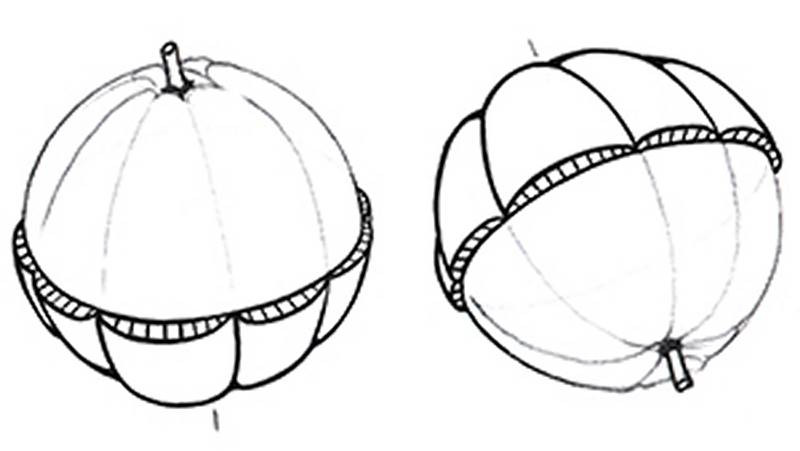
And finally, when we carve into it, we reveal hidden planes that act more like blocks than balls.
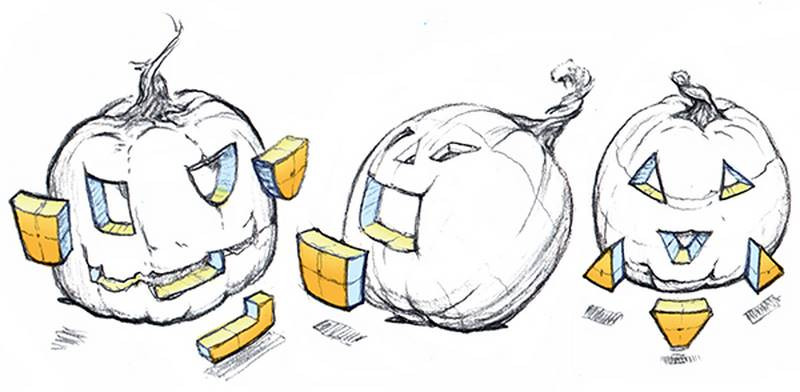
Some artists work out their preliminary planes before they do a finished drawing. Some artists don’t. It depends on what you’re trying to do.
But If you want to make a pumpkin look more… realistic even if it’s cartoony…. Thinking in spheres and lumps and cross-contours and compressions let’s us put in some… spatial credibility. There we are. Mysteries of the Jack-O-Lantern revealed for beginners. The equator thing, the compression at edges, the lumpy divisions, carving into it… Try this. Don’t expect it to be perfect. We learn by doing, and re-doing.
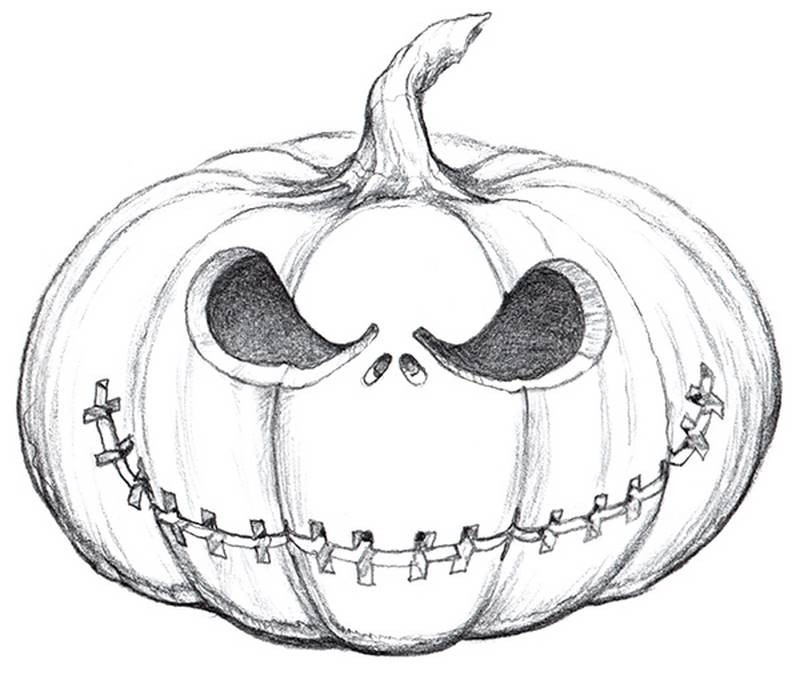
Professionals learn to draw spheres really accurately by first learning to draw cubes really accurately but that’s a perspective course, and you may not want to draw professionally – you may just want to have some fun with this, and the inaccuracies may be your charm.
If you want to draw professionally, I teach that. You can find a full course for cheap at my website. But why not enjoy playing around before getting to work?